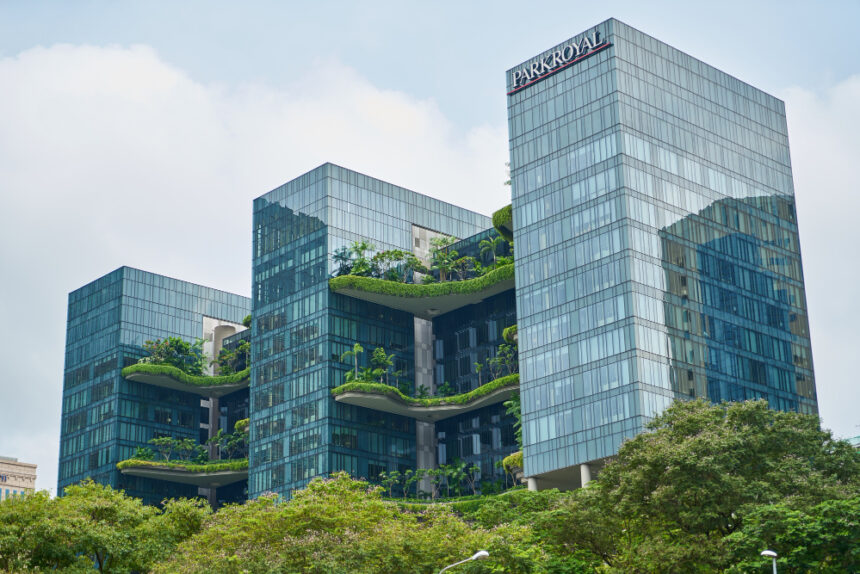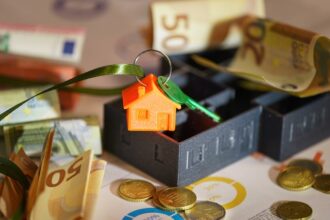The real estate industry is experiencing a fundamental transformation as sustainable and wellness-driven properties become the defining standard for modern development in 2024. Recent market analysis reveals that properties with environmental certifications and wellness features command premium prices averaging 23% higher than conventional buildings, while experiencing 18% faster lease-up rates and maintaining 95% tenant retention. This shift represents more than a passing trend, signifying a permanent realignment of real estate values around human health, environmental stewardship, and long-term sustainability that reshapes how properties are designed, constructed, and operated.
Major institutional investors now mandate Environmental, Social, and Governance criteria for real estate acquisitions, with $4.5 trillion in assets under management specifically targeting sustainable properties. Corporate tenants increasingly require LEED certification or equivalent standards as baseline criteria for office selection, recognizing that sustainable buildings reduce operational costs by 30% while improving employee productivity by up to 16%. Residential buyers, particularly millennials and Generation Z, prioritize health and environmental features, with 78% willing to pay premiums for homes with solar panels, efficient HVAC systems, and non-toxic materials.
The convergence of climate change urgency, public health awareness heightened by recent global events, and technological advancement enabling cost-effective sustainable solutions creates unprecedented momentum for wellness-driven real estate. Understanding these developments becomes essential for developers, investors, property managers, and occupants as the industry rapidly evolves toward buildings that actively enhance human health while regenerating rather than depleting environmental resources.
Green Building Certifications and Standards
LEED and Beyond: Evolution of Certification Programs
Leadership in Energy and Environmental Design certification has evolved significantly since its inception, with LEED v4.1 emphasizing performance-based metrics and continuous monitoring rather than design intentions alone. Properties pursuing LEED certification must demonstrate measurable improvements in energy efficiency, water conservation, indoor air quality, and material sustainability through comprehensive documentation and third-party verification. Platinum-certified buildings achieve 50% or greater energy savings compared to baseline structures while incorporating advanced features like renewable energy generation, rainwater harvesting, and comprehensive waste diversion programs.
WELL Building Standard focuses specifically on human health and wellness through evidence-based design strategies addressing air, water, nourishment, light, fitness, comfort, and mind. Properties achieving WELL certification demonstrate measurable improvements in occupant health metrics including reduced sick days, improved cognitive function, and enhanced satisfaction scores. The integration of WELL with LEED through dual certification creates synergies addressing both environmental sustainability and human wellness comprehensively.
Living Building Challenge represents the most rigorous sustainability standard, requiring buildings to generate more energy than consumed, harvest and treat all water on-site, and eliminate toxic materials completely. These regenerative buildings give back to their environment rather than merely minimizing harm, setting new benchmarks for sustainable development. While challenging to achieve, Living Buildings demonstrate feasibility of net-positive structures that enhance rather than degrade their surroundings.
Passive House certification emphasizes extreme energy efficiency through superior insulation, airtight construction, and heat recovery ventilation, reducing energy consumption by 75-90% compared to conventional buildings. This standard proves particularly valuable in extreme climates where heating and cooling represent major operational expenses. Passive House principles increasingly influence mainstream construction as developers recognize cost-effectiveness of efficiency investments.
Regional and Specialized Certifications
BREEAM certification dominates European markets with comprehensive sustainability assessment covering management, health, energy, transport, water, materials, waste, land use, and pollution. This holistic approach evaluates entire development lifecycles from planning through operation, ensuring sustained performance rather than initial compliance alone. BREEAM’s influence extends globally as international developers seek recognized standards for sustainable properties.
Energy Star certification provides straightforward energy efficiency benchmarking accessible to smaller properties lacking resources for comprehensive certification programs. Buildings scoring 75 or higher on Energy Star’s 100-point scale qualify for certification, demonstrating top-quartile energy performance within their property category. This certification particularly resonates with cost-conscious owners seeking efficiency validation without extensive documentation requirements.
Fitwel certification emphasizes evidence-based design strategies supporting occupant health through workplace design and operational policies. This streamlined certification process appeals to existing buildings seeking wellness validation without major renovations. Fitwel’s integration with property management systems enables continuous performance monitoring and improvement tracking.
Net Zero certification programs verify buildings achieving net zero energy, water, or waste through combination of efficiency measures and renewable resources. These certifications demonstrate feasibility of eliminating environmental impact while maintaining comfortable, functional spaces. Carbon neutral certifications go further by addressing embodied carbon in materials and construction processes.
Health-Focused Design Principles
Biometric Optimization in Building Design
Modern wellness-driven buildings incorporate biometric monitoring to optimize environmental conditions for occupant health and productivity. Wearable device integration enables real-time adjustment of temperature, lighting, and air quality based on aggregate occupant stress levels, alertness, and comfort indicators. Office buildings report 12% productivity improvements through biometric-optimized environments that adapt to circadian rhythms and activity patterns.
Circadian lighting systems adjust color temperature and intensity throughout the day to support natural biological rhythms, improving sleep quality and daytime alertness. These systems provide bright, blue-enriched light during morning hours to suppress melatonin and promote wakefulness, gradually transitioning to warmer, dimmer light in evening to prepare occupants for rest. Healthcare facilities implementing circadian lighting report faster patient recovery times and reduced medication requirements.
Acoustic design for wellness goes beyond simple noise reduction to create soundscapes supporting concentration, relaxation, and social interaction as appropriate for different spaces. Sound masking systems provide consistent background noise levels that improve speech privacy while reducing distraction from intermittent sounds. Biophilic soundscapes incorporating nature sounds enhance stress recovery and cognitive restoration.
Thermal comfort optimization recognizes individual preferences and metabolic differences, providing personalized climate control through smart HVAC systems and architectural features. Radiant heating and cooling systems provide superior comfort with reduced energy consumption compared to forced-air systems. Operable windows and personal fans give occupants control over their immediate environment, improving satisfaction and reducing complaints.
Active Design and Movement Encouragement
Stair design that encourages use through prominent placement, attractive finishes, and natural lighting reduces elevator dependence while promoting physical activity. Buildings with appealing, accessible stairs report 35% increased stair usage and measurable improvements in occupant fitness levels. Skip-stop elevators that service alternating floors further encourage stair use for short trips.
Active workstations including standing desks, treadmill desks, and balance boards combat sedentary behavior associated with numerous health risks. Flexible furniture systems enable easy transitions between sitting, standing, and movement throughout the workday. Companies providing active workstations report reduced musculoskeletal complaints and improved employee engagement.
Fitness amenities integrated into building design rather than relegated to basements encourage regular use. Rooftop running tracks, yoga studios with natural light, and bike storage with shower facilities support active commuting and workday exercise. Residential buildings with comprehensive fitness amenities command 15% rental premiums while reducing resident turnover.
Outdoor spaces designed for activity including walking paths, sports courts, and exercise equipment extend wellness opportunities beyond building interiors. Edible gardens provide physical activity through gardening while supplying fresh produce. Children’s play areas incorporating natural materials and challenging equipment support healthy development.
Environmental Technologies and Sustainable Materials
Advanced Building Materials Innovation
Mass timber construction using cross-laminated timber and glulam beams sequesters carbon while providing structural strength comparable to steel and concrete. These engineered wood products enable construction of tall buildings with negative carbon footprints, storing atmospheric carbon for building lifespans. Mass timber buildings complete construction 25% faster than conventional methods while creating warmer, more appealing interior environments.
Recycled and upcycled materials reduce environmental impact while often providing superior performance characteristics. Recycled steel requires 75% less energy than virgin production while maintaining identical structural properties. Reclaimed wood provides character and durability unavailable in new lumber. Recycled plastic lumber resists rot and insects without toxic treatments.
Bio-based materials derived from agricultural waste, mycelium, and algae offer sustainable alternatives to petroleum-based products. Hempcrete provides excellent insulation and humidity regulation while sequestering carbon. Mycelium insulation grown from mushroom roots provides fire resistance and biodegradability. These materials often improve indoor air quality by avoiding volatile organic compounds present in conventional materials.
Self-healing concrete incorporating limestone-producing bacteria extends building lifespans while reducing maintenance requirements. These innovative materials automatically repair micro-cracks, preventing water infiltration and structural degradation. Photocatalytic concrete actively purifies air by breaking down pollutants when exposed to sunlight.
Smart Building Systems Integration
Building automation systems using artificial intelligence optimize energy consumption while maintaining comfort through predictive control strategies. Machine learning algorithms analyze occupancy patterns, weather forecasts, and energy prices to minimize costs while meeting performance targets. Smart buildings achieve 40% energy savings compared to manually operated facilities.
Digital twin technology creates virtual replicas of buildings that simulate performance under various conditions, enabling optimization without disrupting operations. These models predict maintenance needs, test efficiency improvements, and train operators on system management. Real-time synchronization between physical buildings and digital twins enables continuous performance optimization.
IoT sensor networks monitor environmental conditions, equipment performance, and occupancy patterns throughout buildings, providing data for optimization algorithms. Wireless sensors eliminate installation costs associated with wired systems while enabling comprehensive coverage. Edge computing processes data locally for rapid response while cloud analytics identify long-term optimization opportunities.
Blockchain-based energy trading enables buildings to buy and sell renewable energy directly with neighbors, creating microgrids that improve resilience and reduce costs. Peer-to-peer energy trading optimizes local renewable resource utilization while reducing transmission losses. Smart contracts automate transactions based on supply, demand, and pricing algorithms.
Energy Efficiency and Renewable Integration
Net-Positive Energy Strategies
Building-integrated photovoltaics incorporate solar cells into facades, windows, and roofing materials, generating electricity without dedicated panel installation. Transparent solar windows harvest energy while providing natural light and views. Solar skin technology enables aesthetic customization while maintaining generation efficiency. These integrated systems eliminate visual concerns associated with traditional solar panels.
Geothermal heating and cooling systems leverage stable ground temperatures to provide efficient climate control with minimal energy consumption. Ground source heat pumps achieve 400% efficiency by moving rather than generating heat. Geothermal systems eliminate outdoor equipment while providing silent operation and 50-year lifespans.
Wind power integration through building-mounted turbines and wind-channeling architecture generates supplementary renewable energy. Vertical axis turbines operate efficiently in turbulent urban wind conditions while producing minimal noise. Architectural features that accelerate wind flow increase generation potential while providing natural ventilation.
Energy storage systems using batteries, thermal mass, and other technologies enable buildings to maximize renewable resource utilization while providing grid services. Battery storage systems provide backup power during outages while enabling time-of-use arbitrage. Thermal storage in building mass or phase-change materials reduces mechanical system requirements.
Passive Design Strategies
Building orientation optimization maximizes beneficial solar exposure while minimizing unwanted heat gain through strategic positioning relative to sun paths. South-facing windows in northern hemispheres capture winter sun while overhangs block summer sun. Computer modeling optimizes orientation for specific sites and climates.
Natural ventilation strategies using stack effect, wind pressure, and automated windows reduce mechanical cooling requirements while improving air quality. Ventilation chimneys create convection currents that exhaust hot air while drawing in cool air at lower levels. Automated windows respond to temperature and air quality sensors to optimize natural ventilation.
High-performance building envelopes incorporating continuous insulation, air barriers, and thermal bridge elimination minimize heat transfer and air infiltration. Triple-glazed windows with low-emissivity coatings and gas fills achieve insulation values approaching walls. Vacuum insulated panels provide extreme insulation in minimal thickness for space-constrained applications.
Daylighting design using skylights, light shelves, and light tubes reduces artificial lighting requirements while improving occupant wellbeing. Automated blinds and electrochromic glass optimize daylight levels while preventing glare. Light sensors dim artificial lighting in response to available daylight, maintaining consistent illumination levels.
Indoor Environmental Quality and Air Purification
Advanced Air Filtration Systems
HEPA filtration combined with activated carbon and ultraviolet germicidal irradiation creates multi-stage air purification removing particles, gases, and pathogens. These systems achieve 99.97% removal of particles down to 0.3 microns while eliminating viruses, bacteria, and mold spores. Photocatalytic oxidation destroys volatile organic compounds and odors at molecular level.
Displacement ventilation systems supply fresh air at floor level, allowing natural buoyancy to exhaust contaminated air at ceiling level. This approach provides superior air quality in breathing zones while reducing energy consumption compared to mixed ventilation systems. Underfloor air distribution enables individual control while improving thermal comfort.
Demand-controlled ventilation using CO2 sensors adjusts fresh air supply based on actual occupancy rather than design assumptions. This approach maintains air quality while reducing energy waste from over-ventilation. Advanced sensors detect various pollutants including particulates, volatile organic compounds, and specific gases.
Bipolar ionization and needlepoint bipolar ionization technologies charge particles for easier filtration while destroying pathogens and neutralizing odors. These systems reduce outdoor air requirements by cleaning recirculated air to fresh air standards. Independent testing verifies effectiveness against viruses, bacteria, and mold.
Material Selection for Health
Low-emission materials certified through programs like GREENGUARD and Cradle to Cradle eliminate sources of indoor air pollution. These materials undergo rigorous testing for volatile organic compound emissions ensuring safety for sensitive individuals. Manufacturers increasingly reformulate products to meet stringent emission standards.
Natural materials including wood, stone, and clay provide inherent low emissions while offering aesthetic and tactile benefits. These materials regulate humidity naturally while avoiding synthetic chemicals present in manufactured alternatives. Proper sealing and finishing maintains natural material benefits while ensuring durability.
Antimicrobial surfaces using copper, silver, and photocatalytic coatings reduce pathogen transmission without chemical treatments. Copper door handles and railings eliminate bacteria and viruses within hours of contact. Self-cleaning surfaces activated by light reduce cleaning chemical requirements.
Moisture management through proper ventilation, vapor barriers, and material selection prevents mold growth that threatens occupant health. Humidity sensors trigger ventilation and dehumidification to maintain optimal 30-50% relative humidity. Mold-resistant materials and construction details eliminate growth opportunities.
Water Conservation and Management Systems

Innovative Water Recycling Technologies
Greywater recycling systems treat water from sinks, showers, and laundry for reuse in toilet flushing and irrigation, reducing potable water consumption by 30-40%. Membrane bioreactors provide compact treatment solutions suitable for individual buildings. These systems pay for themselves through water savings within 5-7 years.
Blackwater treatment using advanced oxidation and membrane filtration enables complete water recycling within buildings. Living machines incorporating wetlands and aquatic plants provide natural treatment while creating amenity spaces. These systems achieve net-zero water consumption by eliminating wastewater discharge.
Rainwater harvesting systems collect, filter, and store precipitation for non-potable uses including irrigation, cooling tower makeup, and toilet flushing. First-flush diverters ensure water quality by discarding initial runoff containing accumulated pollutants. Smart controls prioritize rainwater use while maintaining backup municipal supply.
Atmospheric water generation extracts moisture from air through condensation or desiccant processes, providing water independence in water-scarce regions. Solar-powered systems generate water without grid connection, enabling off-grid development. These systems provide emergency water supplies during disruptions.
Smart Water Management
Leak detection systems using acoustic sensors and flow monitoring identify problems within minutes, preventing water waste and damage. Machine learning algorithms distinguish between normal use patterns and leaks, reducing false alarms. Automatic shutoff valves isolate leaks before significant damage occurs.
Smart irrigation systems using weather data, soil moisture sensors, and plant requirements optimize landscape watering while preventing overwatering. These systems reduce landscape water use by 50% while improving plant health. Integration with greywater and rainwater systems maximizes alternative water utilization.
Real-time water quality monitoring ensures safety while identifying treatment system issues before they affect occupants. Multi-parameter sensors track pH, turbidity, chlorine, and other indicators continuously. Automated alerts notify operators of quality excursions requiring intervention.
Water-efficient fixtures including ultra-low-flow toilets, waterless urinals, and sensor-operated faucets reduce consumption without sacrificing performance. Dual-flush toilets provide user choice between liquid and solid waste volumes. Thermostatic mixing valves reduce water waste while waiting for desired temperature.
Community Wellness and Social Sustainability
Creating Healthy Communities
Mixed-use developments integrating residential, commercial, and recreational spaces reduce transportation needs while fostering community interaction. Walkable neighborhoods with services within 15-minute walks improve physical activity and social connection. These developments command premium values while reducing infrastructure costs.
Community gardens and urban farms provide fresh produce while creating gathering spaces that strengthen social bonds. Residents participating in community gardens report improved mental health and stronger neighborhood connections. Rooftop farms supply restaurants and residents while managing stormwater and reducing heat island effects.
Inclusive design ensuring accessibility for all ages and abilities creates communities where everyone can thrive. Universal design principles eliminate barriers while improving usability for everyone. Aging-in-place features enable residents to remain in communities as needs change.
Social spaces designed to encourage interaction including community kitchens, libraries, and maker spaces build social capital. Regular programming and events activate these spaces while building relationships. Strong social connections improve mental health and resilience.
Affordable Sustainable Housing
Modular construction using prefabricated components reduces costs while maintaining sustainability standards. Factory production enables quality control and waste reduction impossible with site construction. Modular buildings achieve certification levels comparable to conventional construction at lower costs.
Energy efficiency investments reduce operational costs, improving affordability for low-income residents. Utility bill savings from efficiency improvements often exceed mortgage payment increases. Green affordable housing provides healthiest environments for vulnerable populations most affected by poor indoor air quality.
Community land trusts and cooperative ownership models enable sustainable development while maintaining long-term affordability. Shared equity programs allow wealth building while preserving community access. These models prevent gentrification displacement while improving neighborhood conditions.
Public-private partnerships leverage government support with private expertise to develop sustainable affordable housing. Tax incentives, density bonuses, and streamlined approvals reduce development costs. Successful partnerships demonstrate feasibility of combining sustainability with affordability.
Return on Investment and Market Performance
Financial Benefits of Sustainable Development
Operational cost savings from reduced energy and water consumption provide immediate returns averaging 25-30% reduction in operating expenses. These savings compound over time as utility rates increase while efficient buildings maintain stable costs. Detailed monitoring verifies actual savings matching or exceeding projections.
Premium rents and sale prices for certified sustainable properties average 7-10% above conventional buildings while experiencing faster absorption. Tenants recognize value in reduced utility costs, improved health environments, and environmental responsibility. Institutional investors pay premium cap rates for sustainable properties with demonstrated performance.
Reduced vacancy rates and tenant turnover in wellness-focused buildings improve net operating income stability. Healthy buildings report 50% lower turnover rates saving thousands in turnover costs per unit. Stable occupancy enables better financial planning and higher property values.
Insurance premium reductions for resilient buildings with disaster-resistant features and reduced risk profiles provide ongoing savings. Insurers increasingly recognize sustainable building benefits through premium discounts and improved coverage terms. Risk mitigation features reduce both frequency and severity of claims.
Market Demand Drivers
Corporate ESG commitments drive demand for sustainable office space as companies seek to meet environmental goals. Fortune 500 companies increasingly mandate sustainable building occupation as part of carbon neutrality commitments. This demand creates competitive advantages for early-adopting developers.
Employee recruitment and retention advantages in healthy buildings become crucial as competition for talent intensifies. Workers increasingly prioritize employer environmental responsibility and workplace wellness. Companies in healthy buildings report improved recruitment success and reduced turnover costs.
Regulatory requirements including building performance standards and carbon pricing make sustainability mandatory rather than optional. Cities implementing energy benchmarking and emissions limits create compliance risks for inefficient buildings. Proactive sustainability investments avoid future retrofit mandates.
Investor preferences shifting toward sustainable assets drive capital availability and pricing advantages. Green bonds and sustainability-linked loans provide favorable financing for certified projects. Divestment from unsustainable assets creates acquisition opportunities for sustainable developers.
Conclusion: The Imperative of Sustainable Wellness-Driven Development
The convergence of environmental necessity, health awareness, and economic advantage has established sustainable wellness-driven real estate as the definitive development model for the 21st century. Buildings that actively promote occupant health while regenerating environmental resources no longer represent idealistic visions but practical necessities demanded by markets, mandated by regulations, and required by our collective future. The comprehensive integration of green building certifications, health-focused design, renewable energy, and community wellness creates properties that excel across all performance metrics while setting new standards for human habitat.
The financial case for sustainable wellness-driven development has evolved from speculative projection to documented reality, with thousands of properties demonstrating superior returns through reduced operations costs, premium pricing, and enhanced asset values. Institutional investors managing trillions in assets now view sustainability as fundamental to fiduciary responsibility rather than optional enhancement. The risk of stranded assets in unsustainable buildings grows as regulations tighten and market preferences solidify around healthy, efficient properties.
For developers, investors, and property managers, the transition to sustainable wellness-driven real estate requires fundamental shifts in thinking, design, and operation but rewards early adopters with competitive advantages that compound over time. The integration of advanced technologies, innovative materials, and evidence-based design strategies enables creation of buildings that would have seemed impossible just years ago. These properties demonstrate that human health and environmental stewardship align perfectly with financial success when approached systematically.
Looking forward, the continued evolution of sustainable wellness-driven real estate promises even more dramatic transformations as technologies advance, costs decline, and benefits become increasingly undeniable. The buildings we create today will operate for decades, making current decisions about sustainability and wellness critical for long-term success. Those who embrace comprehensive approaches to healthy, sustainable development position themselves to thrive in a future where buildings must nurture both human wellbeing and planetary health. The transformation of real estate from environmental burden to regenerative asset represents one of the most important transitions of our time, offering hope that human habitation can enhance rather than degrade the world we share.













